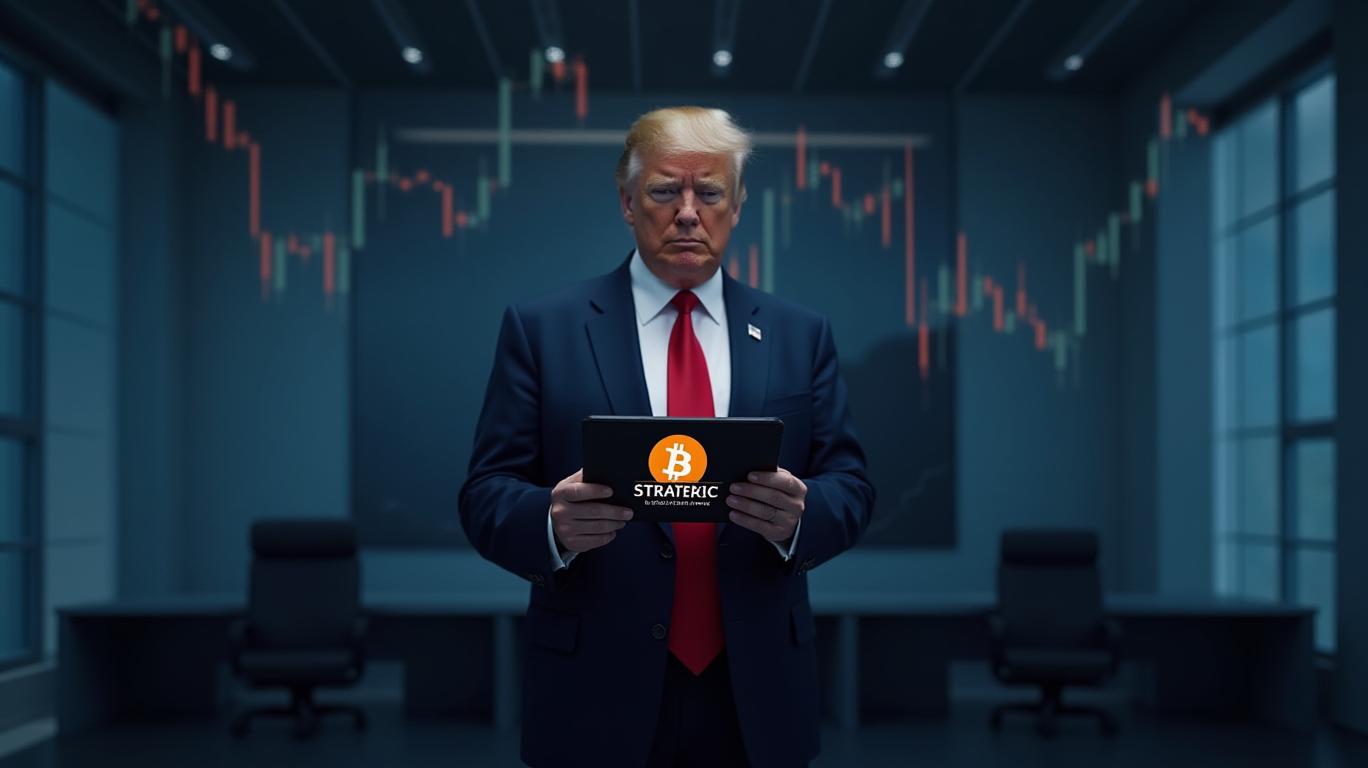Bitcoin's Bull Run and the Trump Wildcard: Navigating Crypto's Regulatory Crossroads
The cryptocurrency market is at a pivotal moment. After years of regulatory uncertainty and volatility, the Trump administration’s 2025 pro-crypto policies have ignited a surge in institutional and retail interest. Bitcoin, the world’s largest cryptocurrency, has soared to an all-time high of $109,760, fueled by geopolitical tensions, fiscal policy shifts, and a White House eager to cement America’s leadership in digital assets. Yet beneath this optimism lies a labyrinth of risks—from cyberattacks to legislative battles—that investors must navigate to capitalize on this historic opportunity.

The Trump Effect: From "Big Lie" to "Big Bitcoin"
President Trump’s second term has been defined by a bold pivot toward crypto adoption. His March 2025 executive order establishing a Strategic Bitcoin Reserve—to hold seized crypto instead of liquidating it—signals a strategic recognition of Bitcoin’s role as a reserve asset. The move mirrors the U.S. gold reserves, positioning Bitcoin as a hedge against fiscal instability. This policy has been a magnet for institutional investors:
alone has added $1.1 billion in Bitcoin to its reserves since early 2025, while ETF inflows reached $4.5 billion in January alone.But Trump’s vision extends beyond symbolism. He has replaced crypto-skeptical regulators with allies like David Sacks, his newly appointed “crypto czar,” and SEC Chair Paul Atkins, who has prioritized “principled” oversight over heavy-handed enforcement. The SEC’s revised stance—deeming meme coins and proof-of-work mining non-securities—has unleashed a wave of innovation, with Ethereum and Solana adoption rates climbing to 49% and 17%, respectively.
Market Sentiment: Bullish, but Fragile
The numbers are striking: 28% of U.S. adults now own crypto, up from 16% in 2021, with 67% of current owners planning to invest more. Yet this optimism is tempered by real-world risks. The $1.5 billion Bybit hack in February—a North Korean Lazarus Group exploit—drove Bitcoin down to $78,000, exposing vulnerabilities in custodial platforms. For every investor buying into the “$200,000 BTC by year-end” forecasts, there’s a skeptic citing volatility, security gaps, and regulatory overreach.
Regulatory Crossroads: Opportunity or Overreach?
The Trump administration’s policies create both tailwinds and headwinds:
Opportunities:
- Strategic Reserve and Institutional Inflows: The Bitcoin Reserve’s establishment has lent legitimacy to crypto as an asset class. Institutional investors, from pension funds to hedge funds, are now openly allocating capital.
- Reduced Enforcement: The SEC’s pause on lawsuits against exchanges and the DOJ’s focus on fraud over technical violations have eased short-term risks for compliant firms.
- Global Competitiveness: By rejecting central bank digital currencies (CBDCs), the U.S. is betting on decentralized innovation—a stance that could attract global capital fleeing China’s and Russia’s state-controlled digital assets.
Risks:
- State vs. Federal Conflicts: While the White House pushes deregulation, states like New York and California are tightening controls. Navigating 50+ regulatory frameworks remains a hurdle.
- Security Realities: The Bybit breach underscores that no platform is unhackable. Investors must scrutinize custodial services and prioritize decentralized exchanges (DEXs).
- Legislative Uncertainty: Stablecoin bills like the STABLE Act remain stuck in Congress. A misstep here could spark a fresh “crypto winter.”
The Investment Case: Play the Fed, but Hedge the Risks
The path forward is clear for investors:
Go Long on Bitcoin, But Diversify:
Bitcoin’s $21 million cap and institutional backing make it the core holding. However, allocate a portion to Ethereum (for smart contracts) and Solana (for scalability). Avoid meme coins without real-world utility.Monitor Regulatory Milestones:
Track the SEC’s Crypto Task Force updates and the STABLE Act’s progress. A breakthrough could trigger a second leg up in Bitcoin’s price.Avoid Custodial Risk:
Use self-custody wallets or platforms like Coinbase with cold storage, and steer clear of exchanges with centralized hot wallets.Hedge with Traditional Assets:
Pair crypto exposure with U.S. Treasury inflation-protected securities (TIPS) or gold to mitigate downside during market selloffs.
Conclusion: The Crypto Crossroads Demands Courage—and Caution
The Trump era has turned crypto from a fringe experiment into a geopolitical battleground. With Bitcoin’s price nearing $110,000 and institutional inflows at record highs, the upside is undeniable. But the risks—from hacks to legislative gridlock—are real. Investors who combine strategic allocations with rigorous due diligence will position themselves to profit as the world’s digital currency revolution unfolds.
The time to act is now. As the old Wall Street adage goes: “Don’t fight the Fed.” In 2025, that means embracing the crypto-friendly policies of a White House determined to lead the next financial revolution.

Disclosure: This article is for informational purposes only. Past performance does not guarantee future results. Investors should conduct their own research or consult a financial advisor before making decisions.

Comments
No comments yet